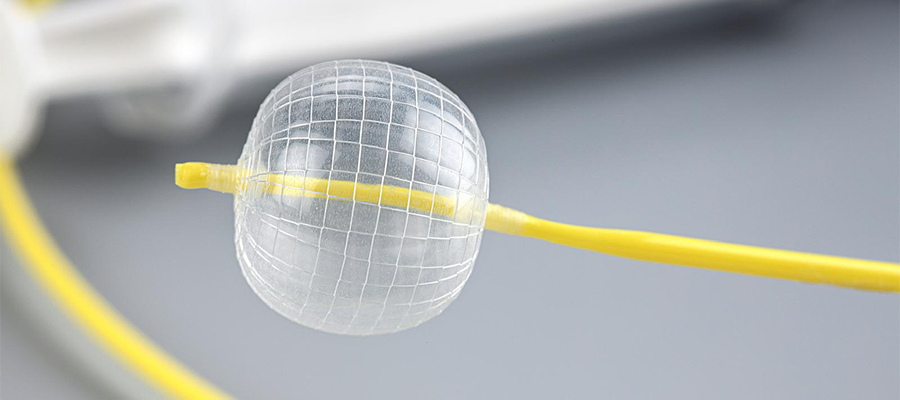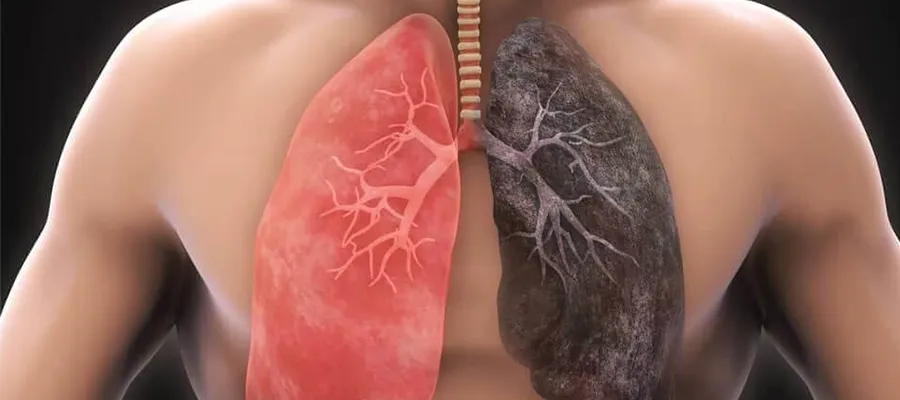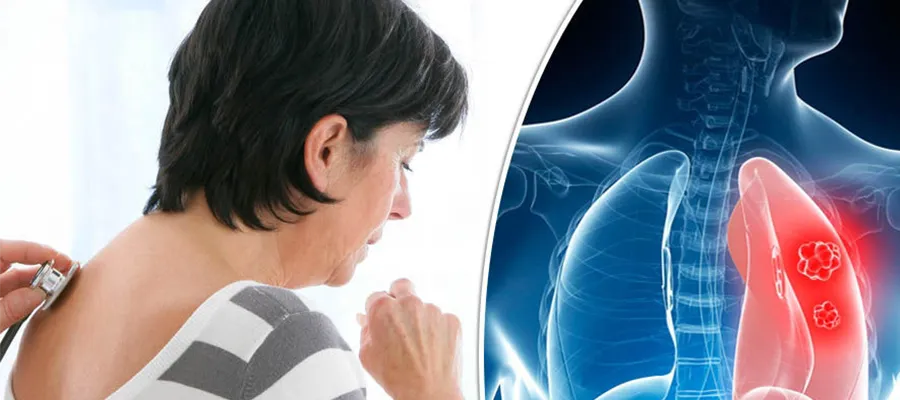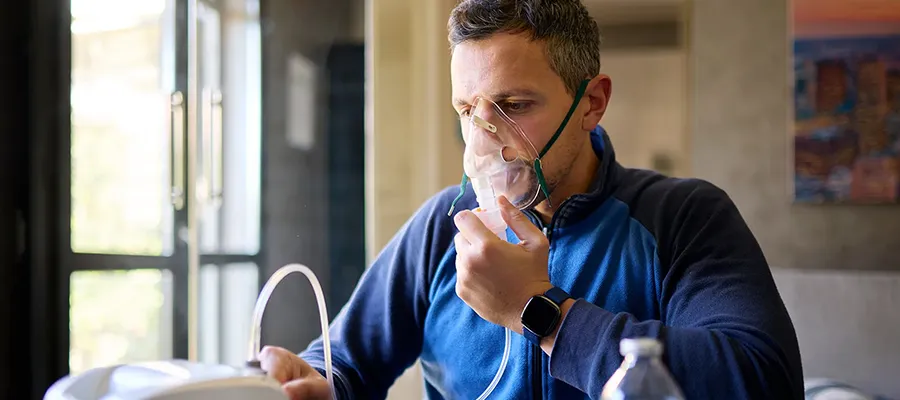What Should a COPD Patient Do?
COPD patients must take significant steps in their daily lives to maintain their quality of life and slow the progression of the disease. While COPD patients struggle with symptoms such as difficulty breathing, chronic cough, and phlegm production, they can also better manage the disease through lifestyle changes. Living with this chronic and progressive disease is possible with accurate information and a disciplined approach.
Chronic Obstructive Pulmonary Disease (COPD) is more common in individuals over the age of 40, and smoking is one of the leading causes. While COPD treatment doesn’t completely eliminate the disease, it does include many methods that can help patients live more comfortably. The answers to the question “What should COPD patients do?” play a significant role in controlling the disease.
Daily Life Recommendations for COPD Patients
There are several important points COPD patients should consider in their daily lives to improve their quality of life. These recommendations will help control the disease, reduce exacerbations, and maintain overall health. Here are the key lifestyle changes COPD patients should make:
Cigarettes and tobacco products should definitely be avoided.
Areas with high air pollution should be avoided as much as possible.
Clean air should be provided in home and work environments, and precautions should be taken against dust and chemicals.
Care should be taken to have a regular and balanced diet.
Lung capacity should be supported with daily light exercises.
Medicines recommended by the doctor should be used without interruption.
Annual flu and pneumonia vaccinations should not be neglected.
Plenty of fluids should be consumed and sleep patterns should be taken into consideration.
These steps help COPD patients live more comfortable lives while also significantly slowing the progression of the disease.
What Exercises Should a COPD Patient Do?
Exercise is crucial for COPD patients to increase lung capacity and improve muscle endurance. However, these exercises should be performed under a doctor’s supervision and in a manner appropriate to the stage of the disease. Recommended exercises for COPD patients include:
Walking: A brisk walk of 20-30 minutes a day can improve breathing control.
Breathing exercises: Techniques such as pursed-lip breathing and diaphragmatic breathing should be practiced.
Leg and arm exercises: Repetitions with light weights strengthen the muscles.
Stretching exercises: Reduces muscle stiffness and helps relaxation.
If you experience shortness of breath during exercise, rest is essential, and movements should be performed without strain. COPD patients can strengthen themselves both physically and psychologically through regular exercise.
Why Do COPD Patients Use Inhalers?
One of the most commonly used methods for treating COPD is inhaled medications. These medications are used to reduce airway constriction, control inflammation, and facilitate phlegm removal. Inhalers deliver medication directly to the lungs, resulting in faster onset of action.
Bronchodilators and corticosteroids are the two main groups of inhaled medications. Bronchodilators widen the airways, making breathing easier. Corticosteroids, on the other hand, reduce inflammation and relieve symptoms. When used according to your doctor’s recommended dosage and timing, inhaled medications are highly effective in managing COPD.
What Should COPD Patients Pay Attention to in Their Nutrition?
Nutrition is a factor that directly impacts the overall health of COPD patients. While the right foods can boost body resistance, poor choices can trigger shortness of breath and fatigue. The ideal diet for COPD patients should be as follows:
Vegetables and fruits rich in fiber should be preferred.
Excessive salt and sugar consumption should be avoided.
Foods with low fat content and high protein value should be consumed.
Meals should be eaten in small portions and at frequent intervals.
Excessive talking during meals should be avoided as this can cause air swallowing.
Gas-producing foods should be consumed in limited amounts, as abdominal bloating can increase shortness of breath.
Adequate fluid intake also helps expel phlegm more easily. Therefore, it is recommended to drink at least 2 liters of water a day.
In What Situations Should a COPD Patient Consult a Doctor?
COPD can experience flare-ups (attacks) at certain times. During these attacks, symptoms become more severe, and a person’s condition can deteriorate rapidly. COPD patients should consult a doctor immediately if they experience the following:
If shortness of breath has increased more than normal
If the phlegm has darkened in color or increased in quantity
If you have signs of infection such as fever, chills or chest pain
If breathing becomes difficult even when talking or at rest
If you see bruising on your lips or fingertips
Such symptoms may indicate severe respiratory distress and require immediate medical attention. Early medical attention is crucial to preventing complications.
How Should a COPD Patient Organize Their Work and Social Life?
COPD patients may need to make some adjustments to maintain their work and social lives. Work environments that are dusty, smoggy, or exposed to chemicals should be avoided. Whenever possible, work outdoors or in well-ventilated areas is preferred.
Caution should also be exercised in social activities, and activities requiring excessive exertion should be avoided. Rest breaks should be taken to allow breathing to recover. Furthermore, the support of the social environment contributes positively to the treatment process by keeping patients’ morale and motivation high.
When Should a COPD Patient Be Hospitalized?
Hospitalization for COPD patients is typically necessary when exacerbations are severe, shortness of breath becomes unbearable, or home treatments are inadequate. Hospitalization may be necessary, particularly in cases where oxygen levels drop significantly, carbon dioxide levels increase, or consciousness changes occur.
Additionally, secondary infections such as pneumonia can be dangerous for COPD patients and require inpatient treatment. In the hospital setting, patients can quickly stabilize their condition with oxygen supplements, medication, and ventilators.
How Long Does COPD Treatment Take?
Because COPD is a chronic disease, treatment continues throughout life. However, this process varies depending on the stage of the disease and the individual’s compliance with treatment. Individuals diagnosed at an early stage and who begin treatment promptly experience slower disease progression and a higher quality of life.
Regular doctor checkups, medication use, exercise, and healthy lifestyle habits are all factors that positively impact this process. Therefore, COPD patients can live long and quality lives as long as they adhere to their treatment.
How Much Does COPD Cost?
COPD treatment costs can vary depending on the patient’s needs. Factors that influence pricing include medications, pulmonary rehabilitation programs, doctor visits, and potential hospitalizations. Furthermore, the equipment and experience of the healthcare facility where the treatment is administered can also determine the price. Contact us today for pricing for COPD patients.








